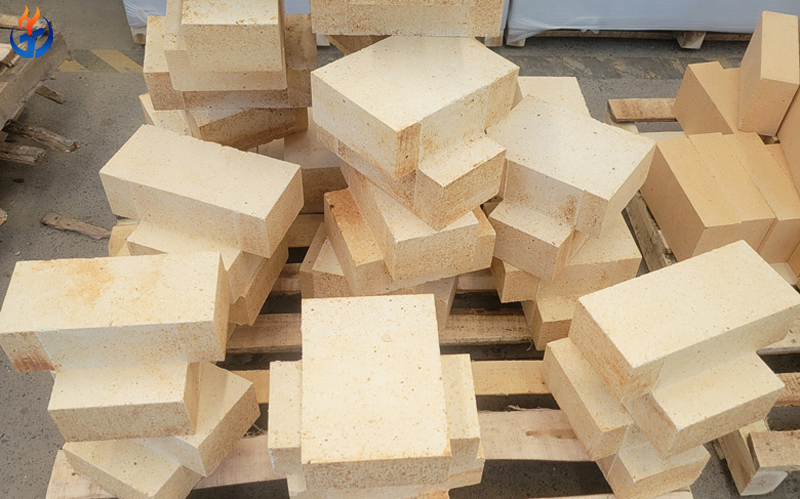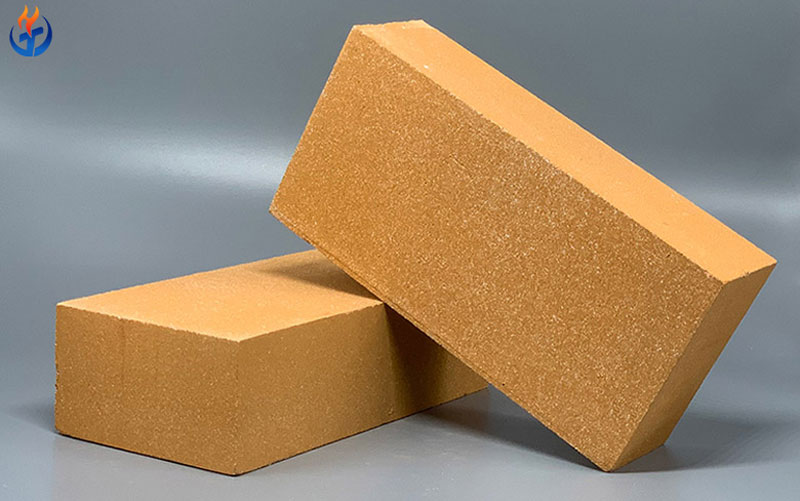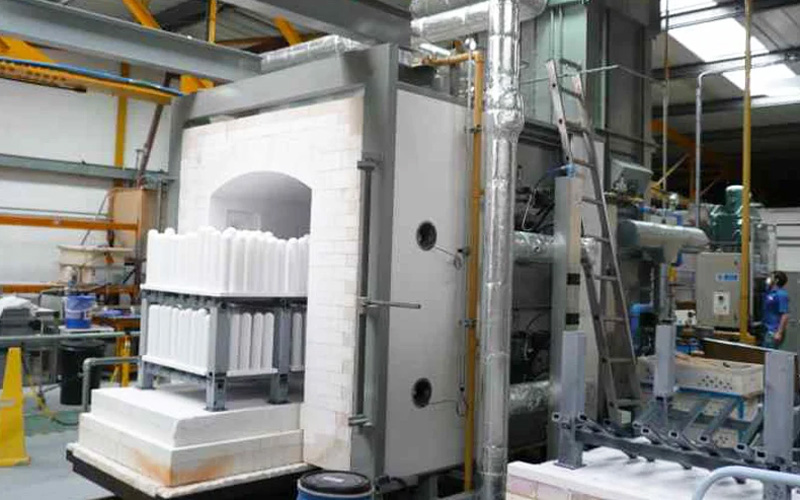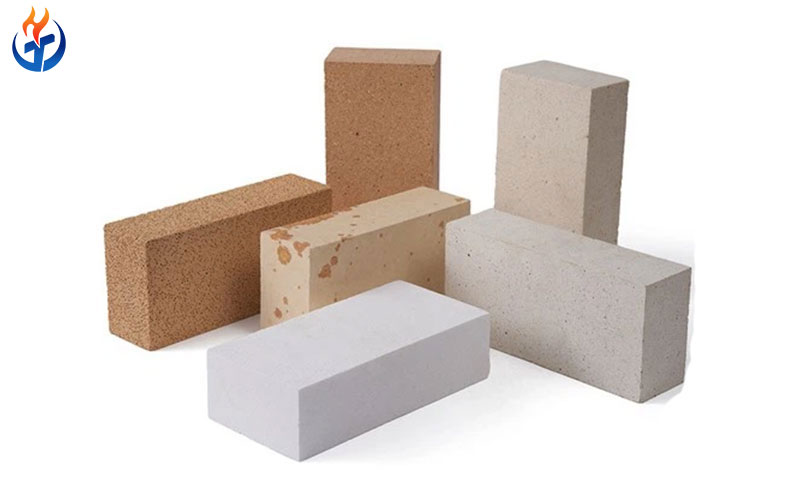Refractory bricks are the foundation of almost every high-temperature industrial furnace or kiln. Their ability to resist heat, corrosion, and mechanical stress makes them essential for industries such as steel, cement, glass, ceramics, non-ferrous metals, and petrochemicals. However, not all refractory bricks are the same. Depending on the part of the kiln and its operating environment, different shapes, sizes, and materials are required.
Xintai Refractory, a professional manufacturer with decades of production experience, understands that kilns demand precision and variety in refractory materials. In this article, we will introduce the common types and sizes of refractory bricks, helping you better understand their applications and how to choose the right product for your project.

Basic Refractory Bricks within Standard Shapes and Sizes
General refractory bricks form the largest category of materials used in industrial kilns. They are commonly rectangular or wedge-shaped and are used in furnace walls, roofs, arches, and doors. These standard shapes make construction efficient while ensuring long service life under extreme conditions.
The most widely used material categories include clay bricks, high alumina bricks, and silica bricks, each selected according to the required thermal and mechanical properties.
T-Grade Straight Refractory Bricks
One of the most frequently used categories is the T-Grade straight refractory brick series. These bricks are classified based on their dimensions and provide flexibility in construction.
T-3 Refractory Brick (Standard Brick):
Dimensions: 230 x 114 x 65 mm
The T-3 brick is known as the standard brick, used across various kilns due to its versatility. It adapts well to different masonry designs and is suitable for both vertical and horizontal kiln construction.T-6 Refractory Brick:
Dimensions: 250 x 123 x 65 mm
This model is frequently used in larger industrial kilns, where slight variations in size improve structural alignment.T-7 Refractory Brick:
Dimensions: 300 x 150 x 65 mm
Designed for heavy-duty kiln parts that require broader contact surfaces.T-9 Refractory Brick:
Dimensions: 230 x 171 x 65 mm
A slightly wider model that provides stability in curved or pressure-bearing kiln areas.
Xintai Refractory produces T-grade straight bricks with high dimensional accuracy and uniform density, ensuring consistent performance in high-temperature environments.
Thick Wedge Refractory Bricks
When constructing arches, furnace doors, or vaults, wedge-shaped bricks are essential to form curves without leaving gaps. Thick wedge refractory bricks are among the most common.
T-19 Brick (Axe-Shaped):
Dimensions: 230 x 114 x 65/55 mm
Typically used in furnace doors and arches, often paired with T-20 or corner bricks such as T-52.T-20 Brick:
Dimensions: 230 x 114 x 65/45 mm
Its sloped profile allows precise alignment in arched structures.T-22 Brick:
Dimensions: 250 x 123 x 65/55 mm
Often paired with T-23 and T-50 corner bricks, this size provides excellent mechanical strength for load-bearing arches.
These wedge designs enable tight, interlocked masonry, which is crucial for kilns exposed to mechanical vibration and high thermal cycling.
Side and Rear Wedge Refractory Bricks
Some kiln structures require more complex wedge variations, especially for arches, furnace doors, and transitional corners. Side and rear wedge refractory bricks fulfill this role.
Key models include:
T-38 Brick (Knife-Shaped): 230 x 114 x 65/55 mm
T-39 Brick: 230 x 114 x 65/45 mm
T-41 Brick: 250 x 125 x 85/55 mm
T-43 Brick: 230 x 114 x 96/65 mm
T-44 Brick: 230 x 114 x 76/65 mm
T-45 Brick: 230 x 114 x 56/65 mm
T-46 Brick (Corner Type): 275 x 230 x 150 x 80/15 mm
T-52 Brick: 275 x 230 x 113 x 115/75 mm
T-54 Brick: 240 x 230 x 113 x 115/40 mm
T-61 Brick: 135 x 113 x 230 x 56/37 mm
These sizes allow engineers to design kiln structures that are both mechanically stable and thermally efficient. At Xintai Refractory, every brick is produced with high mold precision to ensure perfect fitting during masonry.
G-Grade Refractory Bricks
While T-grade bricks are common for general kiln construction, G-grade refractory bricks are specifically designed for blast furnaces and similar high-load environments. They are often made from high alumina or fireclay materials, ensuring both strength and thermal stability.
Standard models include:
G-1 Straight Brick: 230 x 150 x 75 mm
G-2 Straight Brick: 345 x 150 x 75 mm
G-3 Wedge Brick: 230 x 150 x 135/75 mm
G-4 Wedge Brick: 345 x 150 x 130/75 mm
G-5 Wedge Brick: 230 x 150 x 120/75 mm
G-6 Wedge Brick: 345 x 150 x 110/75 mm
G-7 Wedge Brick: 230 x 150 x 90/75 mm
G-8 Wedge Brick: 345 x 150 x 90/75 mm
Their larger sizes and wedge variations make them suitable for blast furnace linings, where both compressive strength and resistance to alkali corrosion are critical.

Other Common Refractory Bricks and Tiles
Not every kiln requires full-sized bricks. In many cases, half tiles, strips, or flat tiles are used for repair work, surface protection, or thin lining applications.
Some common models include:
Half Tile (Half Slab): 230 x 114 x 32.5 mm
Half Strip: 230 x 57 x 65 mm
Quarter Tile: 230 x 114 x 40 mm
Fifth Tile: 230 x 114 x 50 mm
Two Strips: 460 x 114 x 65 mm
Three Flat Tiles: 342 x 230 x 65 mm
Five Flat Tiles: 570 x 230 x 65 mm
Square Ten Tile: 650 x 230 x 114 mm
Square Sixteen Tile: 1040 x 230 x 114 mm
These variations give engineers and kiln operators more flexibility in designing layered linings and carrying out maintenance replacements without disrupting the overall structure.
Customized Refractory Bricks
Every kiln has unique requirements, especially in areas exposed to extreme wear, rapid temperature changes, or chemical attack. For these cases, custom refractory bricks are indispensable.
Xintai Refractory provides tailored refractory solutions by:
Producing bricks according to customer drawings or specifications.
Using premium raw materials such as high alumina, silica, or mullite.
Applying precision molds and advanced kilns for high dimensional accuracy.
Offering prototype testing before large-scale production.
Customized refractory bricks ensure perfect fitting, reduced waste, and longer service life, making them a cost-effective investment for industrial kiln operations.
Choosing the Right Refractory Bricks for Your Kiln
When selecting refractory bricks, consider the following factors:
Operating Temperature: Different kilns operate under different maximum temperatures. For example, high alumina bricks are better suited for steel and glass industries, while fireclay bricks may be sufficient for cement kilns.
Mechanical Load: Arches and roofs require wedge bricks that can interlock and support heavy loads.
Corrosion Resistance: Kilns processing chemicals or metallurgical slag need bricks with high chemical resistance.
Thermal Conductivity: Low thermal conductivity improves insulation, reducing energy consumption.
Dimensional Accuracy: A precise fit minimizes gaps, improving efficiency and durability.
Xintai Refractory’s comprehensive range of T-grade, G-grade, wedge-shaped, and customized bricks ensures that clients can find exactly what they need for every kiln application.
Conclusion
Refractory bricks may look simple, but their design, size, and material composition determine the safety and efficiency of an entire industrial kiln. From T-grade standard bricks to specialized G-grade blast furnace bricks, from thick wedges for arches to customized solutions, each type plays a vital role in high-temperature operations.
With its advanced manufacturing facilities and decades of experience, Xintai Refractory provides a complete portfolio of refractory brick products. Whether you need standard sizes or customized solutions, the company ensures reliability, precision, and performance to meet your most demanding requirements.
By understanding the common types and sizes of refractory bricks, kiln operators and engineers can make better decisions that extend furnace life, improve energy efficiency, and optimize production.
Email: sales@xintairefractory.com
Website: www.xintairefractory.com



